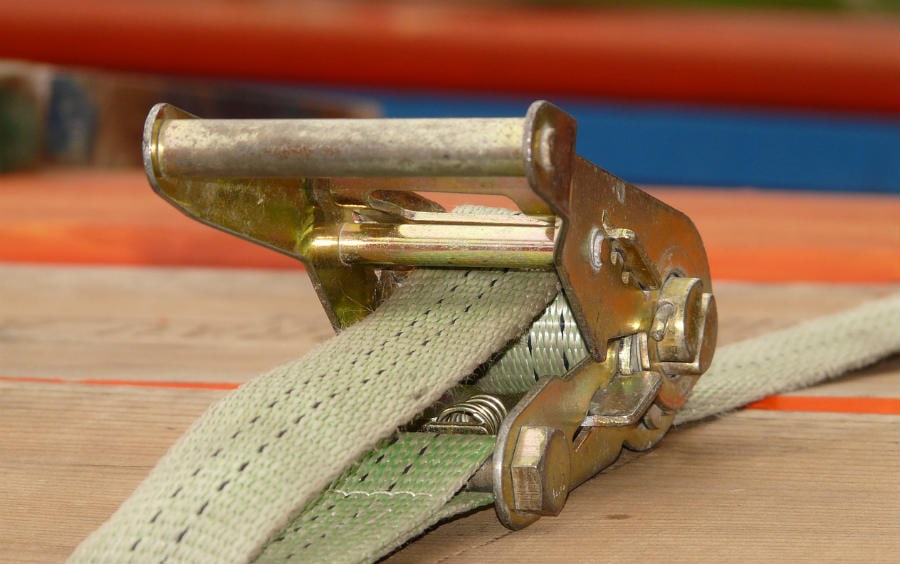The belt tensioner holds the serpentine belt under tension, allowing it to grip the pulleys firmly enough to transmit the engine’s rotating force to the accessories.
Most often, the tensioner assembly is secured by either one, two, or three bolts and is fairly easy to remove once the serpentine belt is off. If an engine has more than one serpentine belt, there will be one belt tensioner for each belt, unless “stretch” belts are used.
Older engines (and some newer ones) can still use sliding adjustments on accessories to hold the belt under tension. The disadvantage there is that tension may have to be adjusted periodically to accommodate belt wear, and irregularities in pulley operation (and temperature) can result in varying tension.
Cost Inclusions in Replacing a Serpentine Belt Tensioner
On average, the cost to replace a belt tensioner on most cars comes to about $150.
For some examples of what a serpentine belt tensioner might cost to replace, assuming a labor rate of $150 an hour:
| Car Model | Labor Time & Cost | Aftermarket Serpentine Belt Tensioner Cost (Excl. Labor) | Factory Serpentine Belt Tensioner Cost (Excl. Labor) |
|---|---|---|---|
| 2004 Nissan Pathfinder (5.6l engine) | $90 (0.6 hrs) | ACDelco comes to about $80 | $239 |
| 2009 Dodge Grand Caravan(3.8l engine) | $90 (0.6 hrs) | Dayco belt tensioner costs about $70 | $146 |
| 2005 Honda Accord (2.4l engine) | $75 (0.5 hrs) | Gates belt tensioner costs about $75 | $240 |
| 2007 BMW 328i (3l engine) | $210 (1.4 hrs) | Continental tensioner is about $130 | $176 |
Of course, actual parts prices and labor rates vary from shop to shop and region to region and labor prices aren’t always necessarily charged at book time.
Signs of a Belt Tensioner Problem
Squealing would be the main one, which is a sign that the belt isn’t being held tight enough. Squealing means slipping, which reduces the effectiveness of the accessories and builds up heat in the belt. It’s not always possible to tell whether a belt is squeaking because the belt itself might have lost its gripping properties or because the tensioner has weakened. So, very often, the belt tensioner is replaced along with the serpentine belt. The labor does almost entirely overlap, giving some savings to replacing both as opposed to replacing them one at a time.
Related article: Serpentine Belt Replacement Cost
Wear on the belt can also happen if the tensioner isn’t in alignment. This can happen if the body of the tensioner has begun to wear. The belt should be inspected for fraying or worn edges, and the tensioner should be inspected to see that it sits in proper alignment with the beltline. If it’s not, or if the edges of the belt are worn, the tensioner may need to be replaced.
Bearing noise is also a common problem. The belt tensioner pulley has a non-serviceable bearing that can wear out. It’s fairly common during belt replacement to find that the serpentine belt tensioner bearings feel rough or dry, even if they didn’t make any notable noise during operation. It is then usually recommended to replace the tensioner as a preventative measure.
What Else Can Go Wrong?
The most obvious thing would be the serpentine belt, which has to be removed to replace the serpentine belt tensioner. If it has signs of wear or is likely to cause an issue, the most economical time to replace the belt is when it is already off.
Any small variance from perfect roundness in any driven pulley will change the size of the circuit of the running belt as it rotates. This will be visible at the belt tensioner as a periodic oscillation following the variance and the engine’s rotation. When watching the tensioner with the engine at idle, if it has too much movement, then problems in the whole belt run may need to be investigated.

While the belt is off, the condition of all the other accessory pulleys and bearings can be checked. If the pulleys need to be cleaned, that is a normal preventative procedure that protects the life of the belt.
The accessories and idler pulleys can also be checked for the condition of their bearings which should spin freely and smoothly without roughness or play. Bearings or idler pulleys or accessories which show signs of bearing failure may be recommended to be replaced during a belt tensioner replacement.
Frequently Asked Questions
Most often, the first sign is either a noise right after starting the engine, or physical wear on the belt. With the belt off, the tensioner can be checked for smooth movement, proper alignment, and the bearings can be checked.
The belt tensioner is a critical engine part, and the charging, cooling, and steering systems rely on it. If the belt will stay on and turn with the engine, it’s probably ok.
There is no replacement interval, but it should be good for over 100,000 miles. Most are only replaced when they fail, but on an older engine, it’s not bad maintenance to replace the tensioner with the belt.
